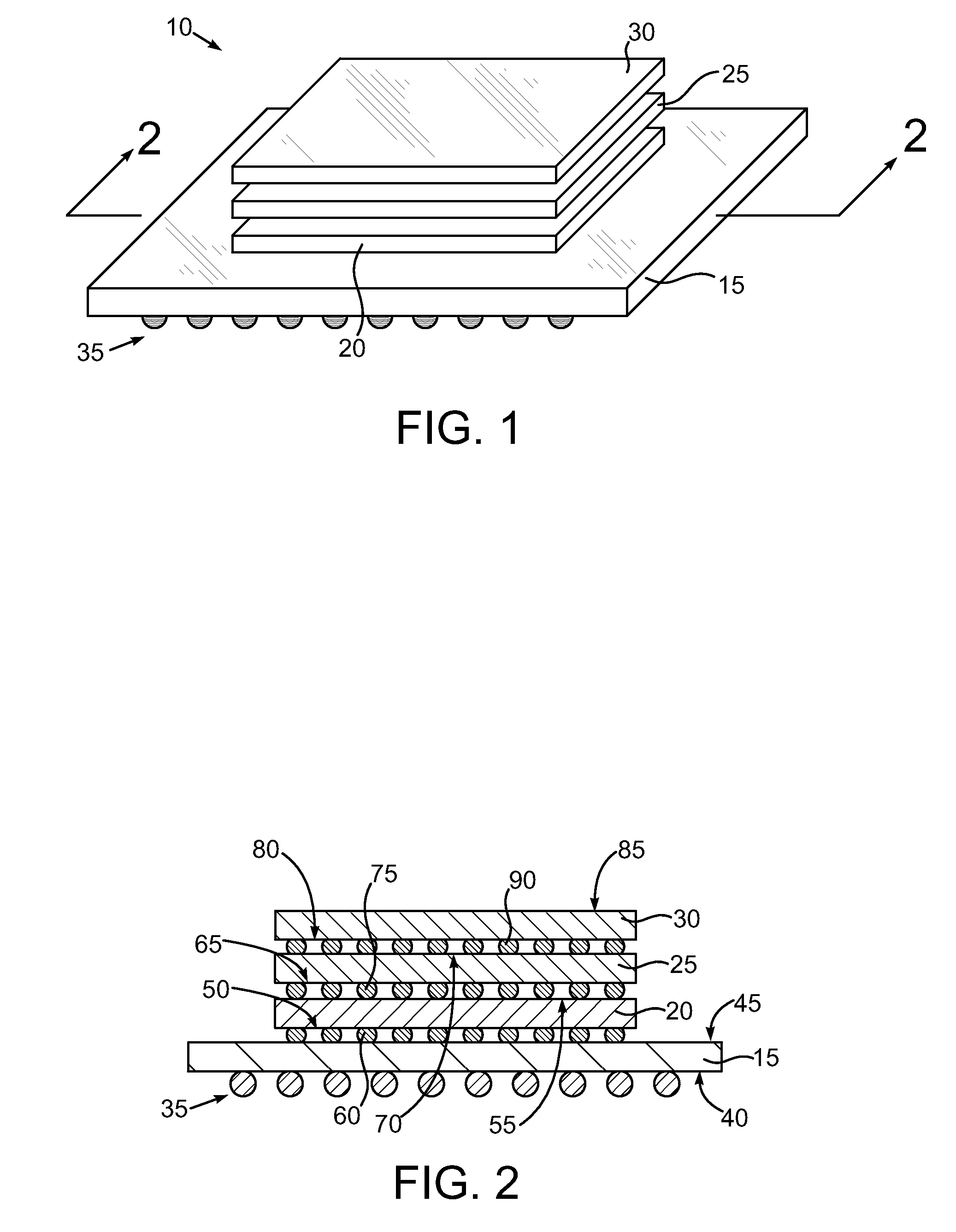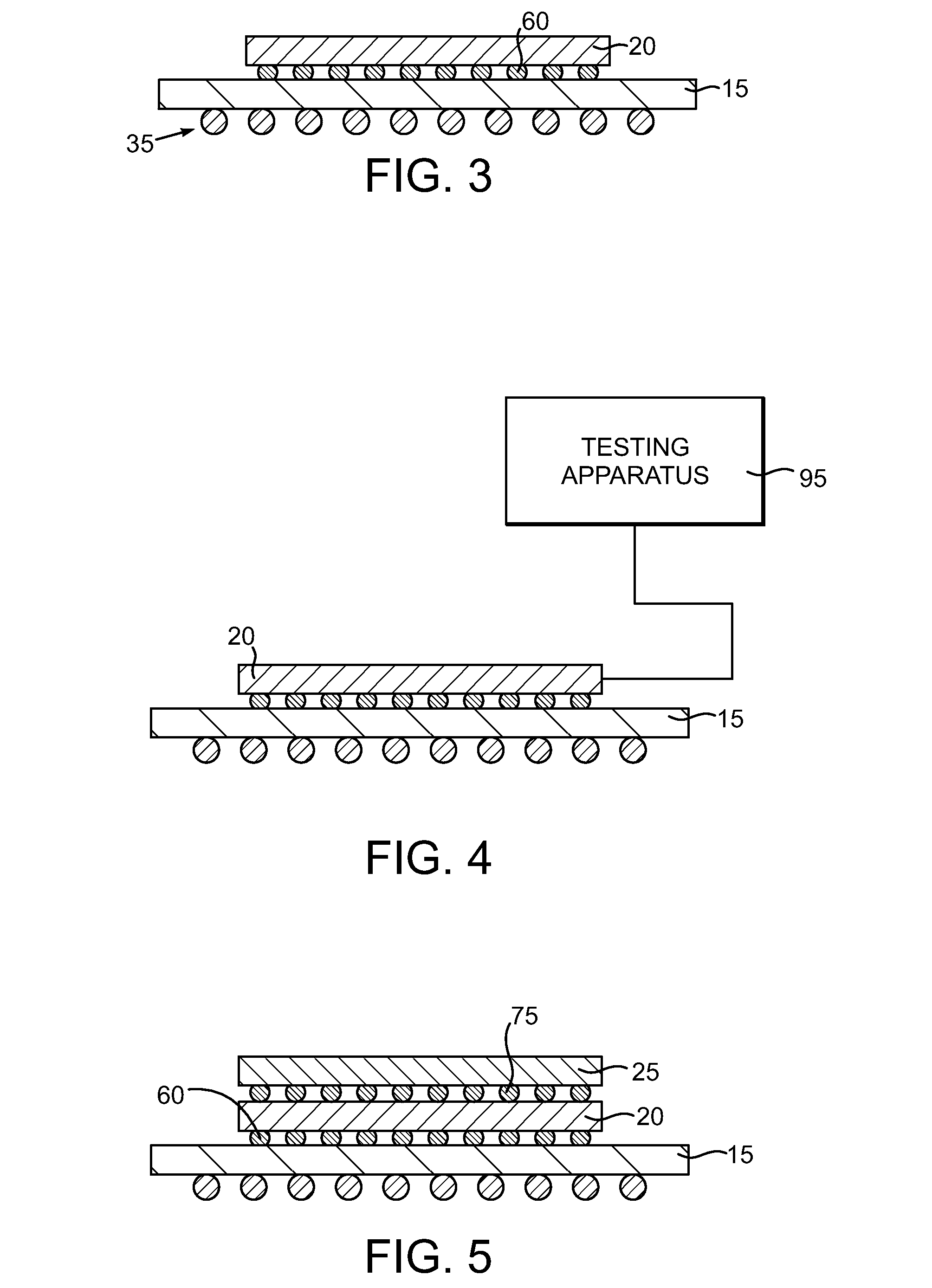Variable temperature solders for multi-chip module packaging and repackaging
a multi-chip module and variable temperature technology, applied in the field of semiconductor processing, can solve the problems of affecting the post-fabrication fault of one chip, destroying one chip without impact, and a lot of semiconductor chips are more prone to post-fabrication faults than others
- Summary
- Abstract
- Description
- Claims
- Application Information
AI Technical Summary
Benefits of technology
Problems solved by technology
Method used
Image
Examples
Embodiment Construction
[0008]In accordance with one aspect of an embodiment of the present invention, a method of manufacturing is provided that includes coupling a first plurality of solder interconnect structures to a first semiconductor chip. The first solder interconnect structures have a first melting point. The first semiconductor chip may be tested. If the first semiconductor chip passes the testing, then a second semiconductor chip is coupled to the first semiconductor chip using a second plurality of solder interconnect structures that have a second melting point lower than the first melting point.
[0009]In accordance with another aspect of an embodiment of the present invention, a method of manufacturing is provided that includes coupling a first semiconductor chip to a substrate using a first plurality of solder interconnect structures. The first solder interconnect structures have a first melting point. A second semiconductor chip is coupled to the first semiconductor chip using a second plural...
PUM
| Property | Measurement | Unit |
|---|---|---|
| melting point | aaaaa | aaaaa |
| melting point | aaaaa | aaaaa |
| conductive | aaaaa | aaaaa |
Abstract
Description
Claims
Application Information
 Login to View More
Login to View More - R&D
- Intellectual Property
- Life Sciences
- Materials
- Tech Scout
- Unparalleled Data Quality
- Higher Quality Content
- 60% Fewer Hallucinations
Browse by: Latest US Patents, China's latest patents, Technical Efficacy Thesaurus, Application Domain, Technology Topic, Popular Technical Reports.
© 2025 PatSnap. All rights reserved.Legal|Privacy policy|Modern Slavery Act Transparency Statement|Sitemap|About US| Contact US: help@patsnap.com



